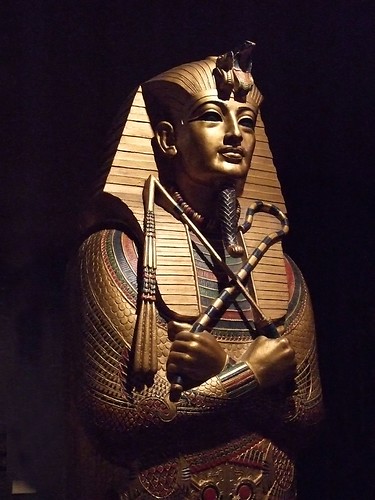
Well, it looks like the ever zealous Dr. Zawai Hawass is not satisfied with just tracking down looted antiquities. He apparently wants to pass laws making the reproduction of an antiquity a violation of copyright. I find this absolutely ludicrous since these antiquities are thousands of years old and therefore far beyond the time period prescribed by most countries for works falling under protective copyright provisions. Copyright is designed to protect the creator of a work as an encouragement to continue producing creative works. It is not intended to be used as a tool to generate government revenue which occurs when antiquities that cannot be traced to a modern descendant revert to the government). Such a law would, in effect, make everything ever made copyrighted essentially forever. I'm sure the MPAA and RIAA would jump for joy if that ever happened in this country!
"The head of Egypt's Supreme Council of Antiquities is a large man with a short temper, and things may get nasty.
When not leading excavations, opening exhibitions, or belabouring the British Museum for not sending him the Rosetta Stone to display in one of the clutch of new museums he's building in Cairo, he has now pledged to go after anyone, anywhere in the world, in search of copyright payments for replicas of Egypt's ancient monuments or museum pieces.
Although such a provision is apparently likely to become law, as so often with Dr Hawass's pronouncements it's not clear how much any of this is serious, and how much a display of public huffing and puffing.
The logistics of such an operation would be as mind boggling as the construction of the Great Pyramid itself. Since the historians, antiquarians, artists and classical scholars from the French academy slogged across the Egyptian desert in the wake of Napoleon, and published their findings in a scores of beautiful volumes, a craze for all things pyramidal and serpentine has regularly convulsed the west."



